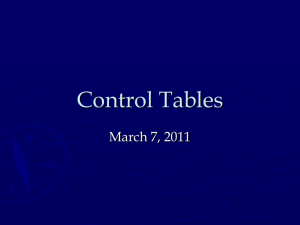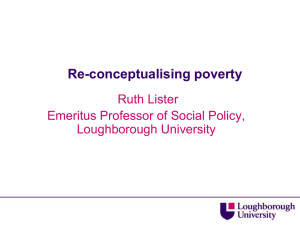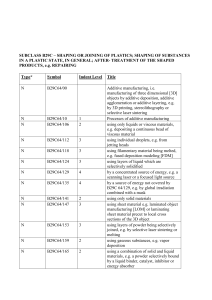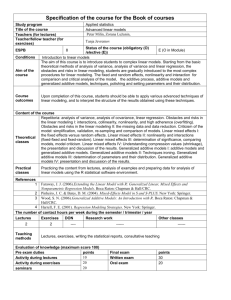Concepts and Variables 8/30
advertisement
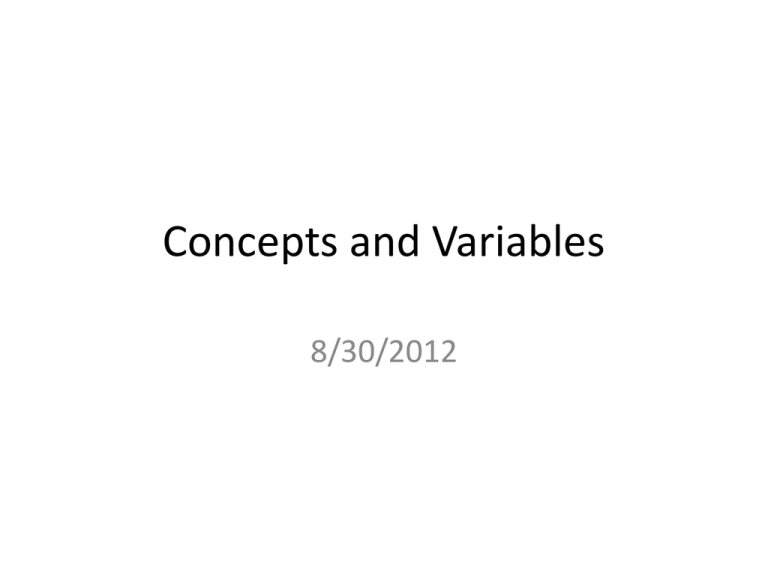
Concepts and Variables 8/30/2012 Readings • Chapter 1 The Measurement of Concepts (1423) (Pollock) • Chapter 2 Measuring and Describing Variables (Pollock) (pp.28-31) OPPORTUNITIES TO DISCUSS COURSE CONTENT Office Hours For the Week • When – Friday 11-1 – Tuesday – And by appointment Course Learning Objectives 1. Students will learn the research methods commonly used in behavioral sciences and will be able to interpret and explain empirical data. 2. Students will learn the basics of research design and be able to critically analyze the advantages and disadvantages of different types of design. The First Steps in Measurement CONCEPTS What are Concepts? • Concepts are the words we use to describe political, social and environmental behaviors • They name and describe the external world The Conceptual Definition • This is the conceptual definition takes abstract things and make them real. • States the concept in unambiguous terms • Must communicate – The variation within a concept – The subject to which the concept applies Types of Concepts • Socio-economic • Attitudinal • Behavioral • Environmental The Operational Definition • Turning your concept into something that can be measured • Must be precise and accurate • This can be very difficult The Operational Concept of Organic The Concept of Poverty Absolute Depravation • The Federal Government sets the poverty guidelines • This is then used to determine eligibility for benefits Relative Depravation 2012 Poverty Guidelines for the48 Contiguous States and the District of Columbia Persons in family/household Poverty guideline 1 $11,170 2 15,130 3 19,090 4 23,050 5 27,010 6 30,970 7 34,930 8 38,890 For families/households with more than 8 persons, add $3,960 for each additional person. Definitions must match When Concepts and Operations do not match Measurement THE SECOND STEP: VARIABLES What are Variables • These are simply measured concepts • This is called operationalization • Good variables take on all values of a concept Variable measurement • constants • Dichotomous Variables • The rest The Dependent Variable • The variable in a relationship you want to explain. The Y variable • There is only one of these in a relationship • It changes in response to an independent variable The Independent variable • Variables that that cause change in the dependent variable • The (X) variable • You may have more than 1 of these The Relationship Between them Telling the Difference between I.V.’s and the D.V. Additive Relationships • Most Social Science relationships involve many i.v.’s…. Why? • Explaining a Dependent variable with more than 1 independent variable is called an additive relationship! Additive Relationships Antecedent and Intervening Variables Antecedent • Come before the independent variable Intervening • Come in-between the IV and the DV • Things like Demographics • Temporal events How they can influence relationships A Spurious Relationship • What antecedent variable might be at play? How we measure our Variables UNITS OF ANALYSIS Units of analysis • The unit about which information is collected and that provides the basis of analysis • Each member of a population is an element • Why they are important? Individual Unit • The lowest form of data • People, congressmen, presidents, etc Aggregate Data • A collection of individual level units • Often measured in percentages • Footprints The Poor over Time Immigration over time The Problem of Access FALLACIES MADE WITH DATA Ecological Fallacy • this arises when an aggregate/ecological level phenomenon is used to make inferences at the individual level. • Taking statewide data and applying to individuals • Does everyone in MS go to church? The Exception Fallacy • taking one person's behavior, attributes, etc and applying it to an entire group • Using 1 example to define group behavior Examples from Texas Style

